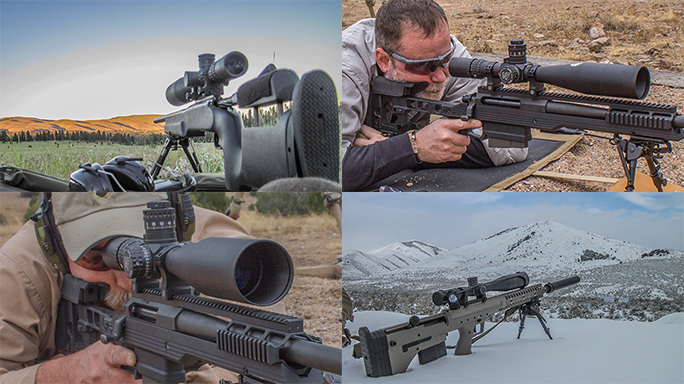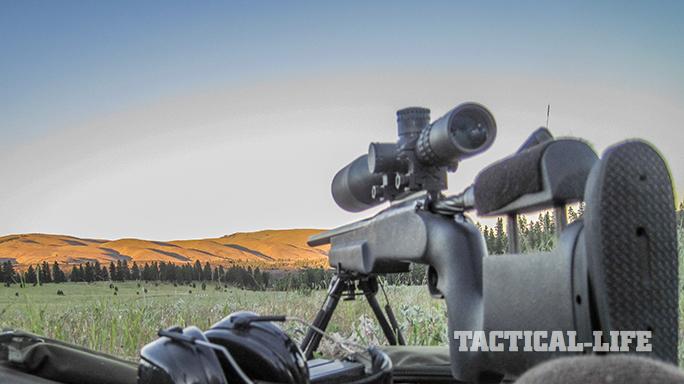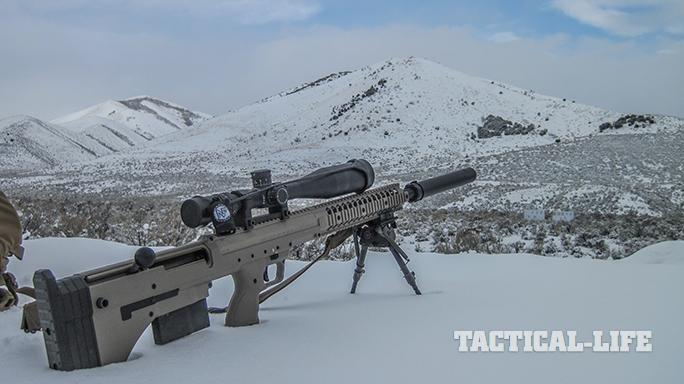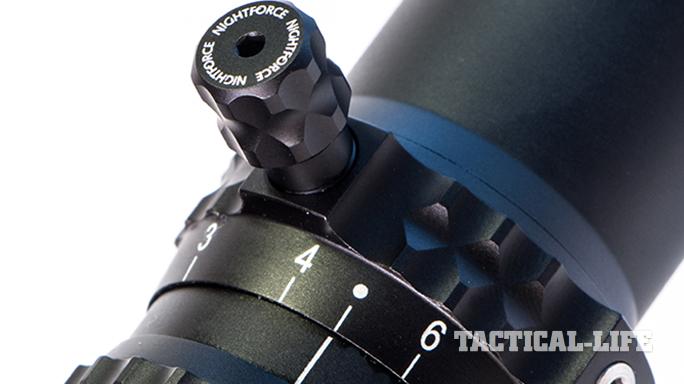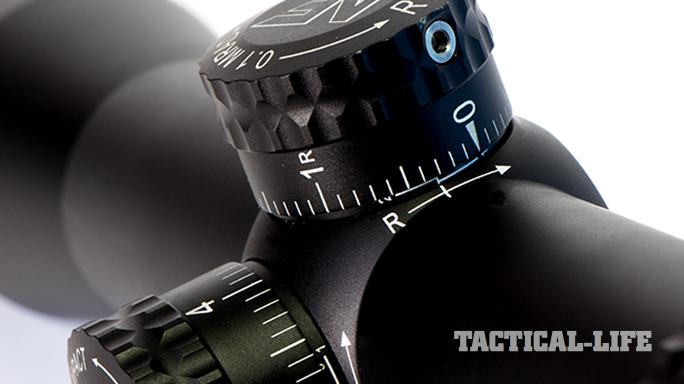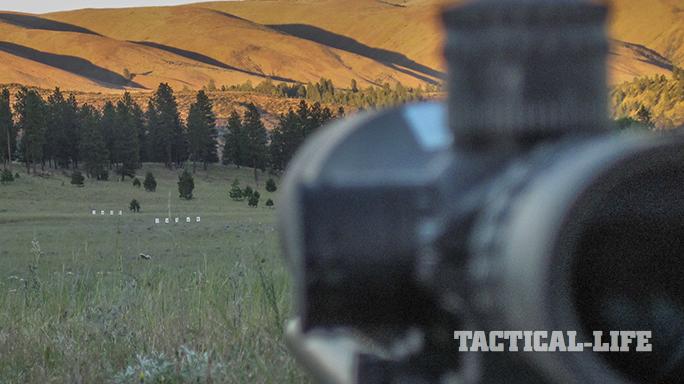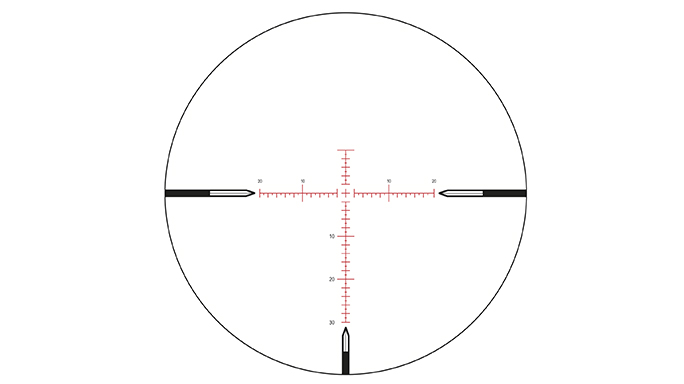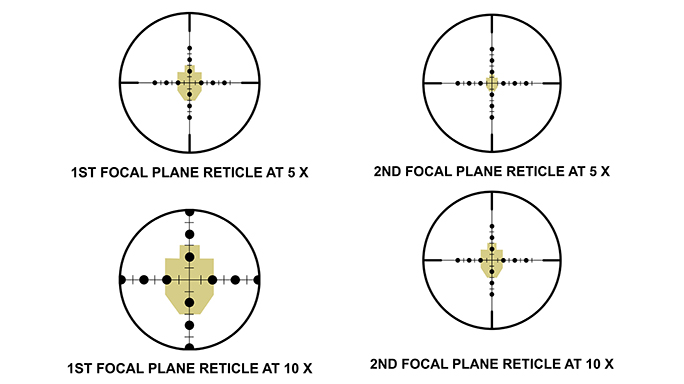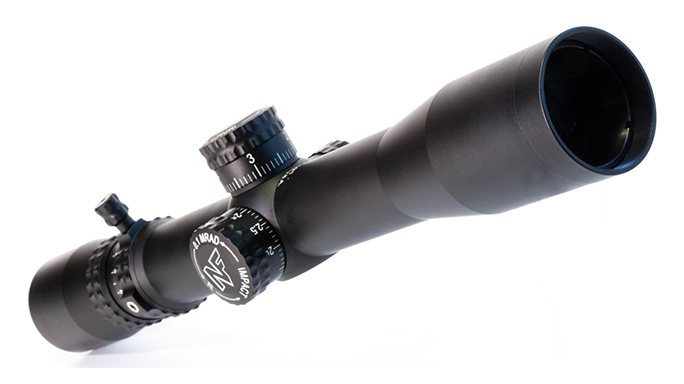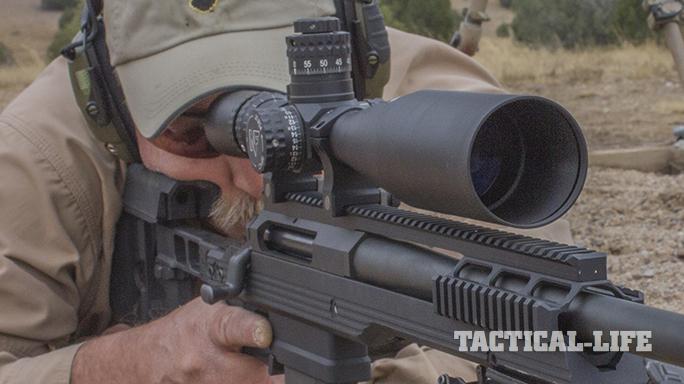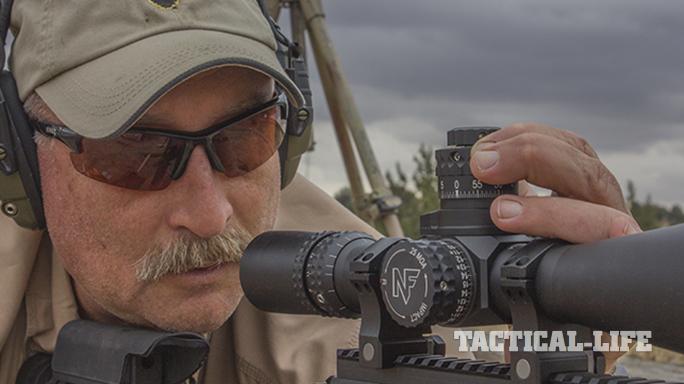The decision of choosing between a scope with a reticle positioned in the first or second focal plane might seem as inconsequential as choosing between peanut butter or chocolate. But there is at lot more to the decision than might—pardon the pun—meet the eye. And, unlike a Reese’s peanut butter cup, you cannot have both.
A riflescope is a long tube containing lenses and, in the case of a variable-power scope, an erector assembly. The erector assembly is what allows the riflescope to alter magnification. Inside this tube is also a reticle, which is the actual sight you use to aim with. The reticle must be placed either in front of or behind the erector assembly. In a fixed-power riflescope, there is no erector assembly, so it’s a non-issue.
If the reticle is placed in the first focal plane (FFP), which is in front of the erector assembly, it will remain in the same proportion to the target, regardless of the scope’s magnification. In other words, as the riflescope magnifies the target, it also magnifies the reticle. If it is placed in the second focal plane (SFP), which is behind the erector assembly, the relationship between the target and the reticle changes with magnification. This means that when you increase the magnification, the target appears larger but the reticle will remain the same size.
Reticle Realities
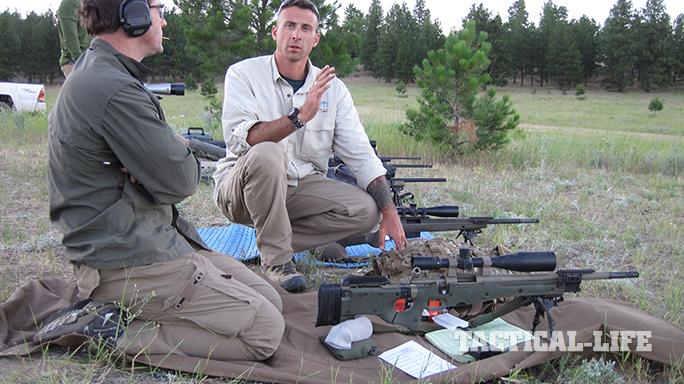
In the past, FFP reticles were only found in European riflescopes, and the SFP system was considered the standard for American or Asian optics. As European optical companies began to enter the American market, they started utilizing the SFP reticle. Interestingly, as demand increased for long-range tactical riflescopes, the FFP reticle became very desirable in the States.
According to Caylen Wojcik, a former Marine sniper and the director of Magpul Core’s Precision Rifle Operations, “First- or front-focal-plane reticles for tactical/long-range shooting are a better choice because the reticle subtensions remain the same regardless of magnification. The benefits of this are range estimations using the mil relation formula, using the reticle for hold-overs and hold-unders in multiple target scenarios, and applying wind corrections using the reticle. All these situations become vastly easier with the first-focal-plane reticle.”
The primary difference between the two styles is really very simple. If your reticle is a mil-dot or some other type that offers ballistic corrections, and it is placed in the SFP, it will only provide the correct ballistic correction or ranging benefits if the riflescope is set to its maximum or a single predetermined magnification. In many cases, this is not an issue because if you’re shooting at a distance that requires ballistic corrections, its very likely you’ll have the riflescope set to its maximum magnification.
- RELATED STORY: 5 Fast-Targeting AR Scopes You Need to Know About
However, sometimes you may not want to shoot at maximum magnification. Maybe you need the advantage of a larger field of view or you need to maximize the brightness during low-light situations; less magnification can help with both. If you turn your 20X scope to 10X, the subtensions for all of the additional aiming points below the center of the reticle double in size. This means a 1-mil dot will become a 2-mil dot. A magnification alteration of 20X to 10X is not that hard to calculate in the field, but going from 20X to 13.5X creates a math problem you might not be able to solve easily in your head.
The advantage the FFP reticle offers is that the subtensions remain the same regardless of magnification; a 1-mil dot is a 1-mil dot no matter what magnification the scope is at. This means you can make ballistic corrections for trajectory or wind the exact same way without having to worry about magnification.
This might make you wonder why anyone would ever want a riflescope with the reticle placed in the SFP. Well, there’s a good reason. You see, a reticle placed in the second focal plane never changes size. It always appears to be the same, even in a riflescope capable of increasing the apparent size of the target by six times (from 4X to 24X). In other words, the reticle always looks the same. This may not seem like a big deal, but with a FFP reticle, the reticle proportions coincide to the target. This means at very low magnification the reticle will appear very small. So small in some instances—depending on the reticle—you cannot make out the additional aiming points well enough to use them.
By the same token, when a riflescope with a FFP reticle is set to the maximum magnification, the lowest additional aiming point—a mil dot or MOA mark—below the center of the reticle might appear at the bottom of the field of view. Some shooters find this disconcerting.
Different Missions
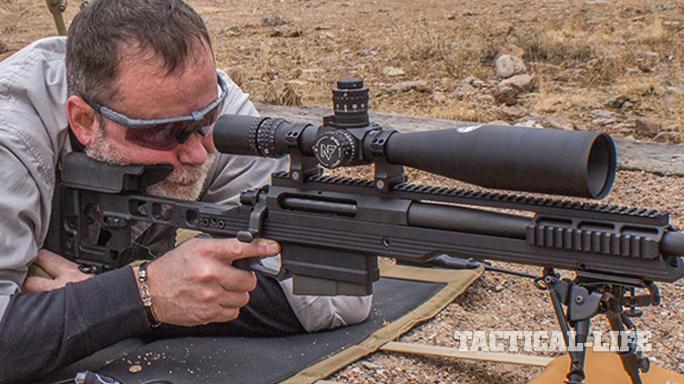
Which system is best? Neither really. Both allow you to apply ballistic corrections at long range, and both are reliable and durable. The major difference is not in how they work, but in how they will be used. If you’re a target shooter and will only be long-range shooting at steel targets or maybe prairie dogs, the SFP should serve you admirably. On the other hand, if you’re operating in battlefield situations where you may need to take shots at very long and very short ranges intermittently, you’ll never have to worry about what power your scope is on with the FFP. This is why Nightforce chose the FFP for its BEAST scope, which was purpose-built with input from the military with fighting in mind.
Also consider that with high magnification optics, it’s not uncommon to turn the magnification down to reduce visible heat waves, which can be generated from a hot barrel. Do this with a scope that has an SFP reticle and all of a sudden your reticle does not work for correction. With an FFP reticle, it will not matter.
Gunsite’s long-range shooting instructor, Mike Moore, who also operates Tac Drivers, the on-site gunsmith service at Gunsite, told me, “A scope with the reticle in the first focal plane must be set on at least 6X for me to distinguish the measured increments on the reticle. That being the case, I’d choose a SFP scope for any power under 4.5X. If I’m so close that this works, I probably don’t need the ability to measure distance with the reticle. With magnification between 4.5X and 8.5X, it’s a toss up between the FFP and SFP reticles. At higher magnifications, I’d opt for an FFP reticle. At the same time, I see no benefit to the FFP reticle if that reticle does not allow me to measure something.”
For me, if I’m using a riflescope of 10X magnification or less, an SFP option is fine. With more than about 10X magnification, I prefer a reticle positioned in the FFP. You may see things very differently. Experience behind your rifle, with various riflescopes and on the range, will help you determine your best option.
This article was originally published in “Tactical Weapons” February/March 2017. To order a copy, visit outdoorgroupstore.com.







